 In a past article, we had argued that the Buddha lived and died as a Hindu and that Bauddha Dharma is nothing but one of the sects within Hinduism. Ambedkarite neo-Buddhists and Ambedkar-touting secularists are understandably furious when their ambitions for a separate identity or their schemes for pitting Hindus against Hindus are thwarted. So we received a number of questions meant as rhetorical and as exposing the hollowness of our claim. Six are from a certain Mr. S. Narayanaswamy Iyer, then three more by a Dr. Ranjeet Singh. We reproduce them and then answer them. First Mr. Iyer’s questions:
In a past article, we had argued that the Buddha lived and died as a Hindu and that Bauddha Dharma is nothing but one of the sects within Hinduism. Ambedkarite neo-Buddhists and Ambedkar-touting secularists are understandably furious when their ambitions for a separate identity or their schemes for pitting Hindus against Hindus are thwarted. So we received a number of questions meant as rhetorical and as exposing the hollowness of our claim. Six are from a certain Mr. S. Narayanaswamy Iyer, then three more by a Dr. Ranjeet Singh. We reproduce them and then answer them. First Mr. Iyer’s questions:
(1) Which of our four Vedams did Buddha follow in his teachings?
Throughout his text, Mr. Iyer presupposes one of the most common weapons which the enemies of Hinduism use: changing the definition of “Hinduism” to and fro, depending on their own best interest. Thus, the Christian mission lobby swears that “tribals are not Hindus”, except when tribals defend themselves against encroachment by Bengali Muslim settlers or take revenge on the Christians for having murdered Swami Lakshmananda and four of his assistants; then they are suddenly transformed into “Hindus”. Here, as long as convenient, “Hindu” is narrowed down to “Brahmanical”. The Vedic tradition, started among the Paurava tribe established in Haryana, was the most prestigious tradition, first to take the shape of a fixed corpus and learned by heart by a class of people set apart just for this purpose. Tribe after tribe adopted this tradition, all while maintaining its own identity and religious practices. Kings in Bengal and South India imported the Vedic tradition and gave land to settle Brahmin communities just to embellish their dynasties with this prestigious Vedic tradition. But other traditions existed alongside the Vedas, both among speakers of Indo-Aryan and among Dravidians and others. Many non-Vedic elements come to light in a corpus collected in the first millennium CE, the Puranas. Many more were incorporated by the later Bhakti (devotion) poets or have subsisted till today as part of oral culture. All these Pagan practices together, Vedic and non-Vedic, constitute “Hinduism”.
When the Muslim invaders brought the Persian geographical term “Hindu” into India a thousand years ago, they meant by it: an Indian Pagan. In Islamic theology, Christians and Jews count as a special category, and Parsis were often considered as Persian and not Indian Pagans. But all the other Indians were called “Hindus”. Whether tribals, Buddhists (“clean-shaven Brahmins”), atheists, polytheists, Brahmins, non-Brahmins, the Lingayats, even the not-yet-existing Sikhs or Arya Samajis or Ramakrishnaites—all of them were Hindus. It is now a mark of anti-Hindu polemicists that they manipulate the meaning of “Hinduism”, and interpret it more broadly or more narrowly as per their convenience. The first rule of logic is “a = a”, i.e. “a term retains the same meaning throughout the whole reasoning process”. So, against these manipulations, we will stick to one meaning for Hinduism, viz. the historically justified meaning of “all Indian Pagans.”
The Buddha had, according to Buddhist scripture, received a Kshatriya upbringing. That means his outlook was formed by an at least passive initiation into the Vedas. Never in his long life did he repudiate this. On the contrary, he only developed ideas that were already present in the Vedic tradition. Thus, “liberation” was a goal that the Upanishadic thinkers had invented and that set them apart from practically all others religions (certainly from Christianity and Islam). Meditation or yoga as the technique to achieve this liberation was first mentioned in the Upanishads. Buddhist scripture mentions two meditation teachers with whom the Buddha studied. At most he invented a new meditation technique, Vipassana (now vulgarized as “Mindfulness”), but meditation was an existing tradition into which he was initiated by older masters, and to which he contributed his own addition, like others did.
Reincarnation and karma are at the heart of Buddhism, and is the first thing which outsiders associate with Buddhism; but these concepts were introduced in the Upanishads. Even the repudiation of what the Vedas had become, particularly the repudiation of ritualism, is already found in the Upanishads. And so is the rejection of desire, the extolling of the value of compassion (daya), and the first options for celibate monkhood. When Buddha became a recluse, he followed a path that was already well established, and that is already mentioned in the Rg Veda, though only in the third person (the Vedic poets themselves were elite figures and a different class from the renunciates). The Buddha rightly said that he had not invented anything new, that he was only treading an ancient path formerly trodden by the earlier Buddhas.
Hindu attitudes to the Vedas varied greatly. Some had never heard of them, some had heard the names but knew little of their contents, some thought they were interesting literature but not a guiding light for moral decisions or choosing a way of life, some adopted practices which they called Vedic though they were not, some paid lip-service to the Vedas, and some really practised Vedic rituals or learned the Vedas by heart. Within this continuum, the Buddha took his place, without this ever being a problem for the Brahmins. The only two attempts on his life were committed by a jealous pupil of his own, a leading Buddhist. Still, he died at an advanced age.
(2) Which of our 330 devatas did Buddha worship?
The more usual number is 33, but modern tourists (and therefore also the secularists) have opted for 330 million. This number is based on a mistranslation of “33 big gods” as “33 crore (one crore = ten million) gods”. Anyway, the number can vary, but yes, there are quite a few, let us settle for “a lot”. Like many elite characters and thinkers, the Buddha is reputed to be into other things than worship, as were many people in Vedic society. Sankhya was an atheist school, as was early Vaisheshika, and so were Jainism and the Charvaka school. The Mimansa school, orthodox par excellence, taught that Vedic rituals are effective alright, but the gods invoked during the ritual proceedings are mere cog-wheels in the magical mechanism set in motion by the priests. These gods have no reality in themselves and only exist in so far as they are invested with existence by the human beings who “feed” them. So, atheism was a recognized option among the Hindu elite, of which prince Siddhartha Gautama, the Buddha, was a prominent member.
All the same, he paid homage to the gods on some occasions. His breakthrough to liberation was followed by an intervention of the supreme gods Brahma and Indra, asking him to share his bliss and teach his way to liberation with others—the very start of Buddhism. Had the Buddha or even the later editors of the Pali Canon been as anti-Vedic as the present neo-Buddhists imagine, they could easily have censored this episode out. At the end of his life, during which he was regularly consulted on political matters because he was after all very at home in statecraft, he was asked by the authorities of a republic to formulate the qualities by which a state prevents decline. In reply, he listed the “seven principles of non-decline”, and among them is an abiding maintenance of ancient religious traditions, including rituals and pilgrimages. The ancient religious practices which he knew, were Vedic or at any rate Hindu ones. Buddhist monks later carried Vedic gods such as Indra, Brahma, Ganapati and Saraswati to foreign lands. Japanese temples are dedicated to Benzai-ten or Saraswati, some house the “twelve Adityas/Ten”. The Shingon sect of Buddhism has a quasi-Vedic ritual called “feeding the gods”, exactly the same conception as in the Vedas. Thai and Indonesian Buddhists have adopted the cult of Rama, whom the Buddha did not really worship but whom he venerated as a great scion of the Ikshvaku lineage to which he himself belonged, and of whom he claimed to be a reincarnation. Neo-Buddhists object to the long-established Puranic teaching that both Rama and the Buddha are incarnations of Vishnu, but the germ of this teaching was planted by the Buddha himself when he claimed that Rama and he were the same person.
(3) Which of our samskarams did Buddha tell his followers to observe and perform?
Samskarams (life rituals) are meant for people living in society, as the Vedic poets did. Renunciates are living outside society, often they perform their own funeral upon “leaving the world”, and after that the samskarams no longer apply to them. The Buddha founded a monastic order, an organized form of renunciation. He did not found a separate non-Hindu religion (the way the first Christians did separate from Judaism), for his lay followers were part of Hindu society. Mostly we are informed of their caste provenance, their families, their marriage situations. Whatever customs or rituals applied in their respective Hindu communities applied to them as well. Jains developed a separate lay community, but even these lay Jains are part of Hindu society. They observe caste, often intermarrying with non-Jains belonging to the same caste but not with Jains belonging to another caste. In Buddhism, even this much separateness did not exist. Buddhism was nothing but a monastic community within Hindu society. So the Buddhist order did not observe Hindu lay society’s life ritual, just as many non-Buddhist renunciates didn’t.
(4) Which of our varnashrama rules, duties and practices did Buddha teach his followers, and which of those do they perform today?
Caste is a part of lay society, not applicable to renunciates. Their names revealing their caste provenance are replaced by monastic names. The questioner also betrays his short-sighted assumptions by projecting the caste relations of recent Hindu society on that of the Buddha’s time. Social order was in flux at the time, with the Buddha e.g. defending caste as defined by the paternal line regardless of the mother’s caste against king Pasenadi disowning his wife and son when he finds out his wife (and therefore, he assumes, his son) isn’t a true Kshatriya. Clearly, both conceptions of caste, viz. in the paternal line vs. full endogamy, were competing at the time, with the Buddha taking the then more conservative position, while later the principle of full caste endogamy (only marriage within one’s own caste) was to prevail. Mind you, the Buddha didn’t use this excellent opportunity of a king’s question on caste matters to fulminate against caste. If he was an anti-caste revolutionary, as Dr. B.R. Ambedkar imagined, he would have seized this opportunity to condemn caste itself, but he didn’t.
Caste was in existence but considerably more relaxed than in later centuries. For this reason, the Buddha’s attitude was more relaxed too, unlike the obsession with caste among the neo-Buddhists. Moreover, he had chosen not to rock the boat in a society that tolerated and maintained his monastic order. In every country where Buddhism found a place, it accepted whatever social arrangement prevailed. In Thailand, it didn’t abolish hereditary monarchy though this is a casteist phenomenon par excellence. In China it didn’t abolish the centralized-bureaucratic empire. On the contrary, when the Buddhist White Lotus sect drove out the Mongol dynasty, its leader, who had started out as a Buddhist monk and was deemed the Maitreya Buddha, established a new imperial dynasty, the Ming, replacing the Mongol ruling class by a Chinese ruling class but leaving the exploitative system in place. In Japan, it didn’t abolish militaristic feudalism; instead, its Zen school became the favourite religion of the Samurai warrior class. So, in India too, it fully accepted the arrangement in place, recruited mainly among the upper castes (most Buddhist philosophers were born Brahmins), and concentrated on its spiritual mission. Buddhism as an anti-caste movement is just a figment of the secularist imagination.
(5) Which Hindu priests initiated Buddha into sannyasa? Any lineage is founded by someone who takes the jump. Later on, it is continued by followers who go through an initiation ceremony; and when succeeding their guru, they go through an investiture ceremony. But the founder just has his moment of enlightenment. Asking about the founder’s initiation is the mediocre mind’s imposing his humdrum norms onto a genius. Thus, Ramana Maharshi was unprepared when suddenly, the insight overcame him; he didn’t receive it from a teacher. Even so, when Siddhartha Gautama went to the forest, he did become a pupil of at least two meditation masters. Probably they put him through some kind of initiation, though we don’t have the details on it.
The questioner means “Vedic” whenever he says “Hindu”, and projects everything we now know as Hindu (decried by the Arya Samaj as “Puranic”) onto the Vedic age. The institutionalization of Sannyasa (renunciation) took on a shape recognizable till today with Shankara in ca. 800 CE. In the Vedic age itself, the current formalities of Sannyasa did not exist. When Yajnavalkya retired to the forest (the occasion on which he pronounced his famous exposition of the Self to his wife Maitreyi), he did not have to take anyone’s permission. Valmiki of Ramayana fame set up his own hermitage, as did seer Vasishtha and his wife Arundhati. So he starts imposing current Hindu norms on the Buddha twenty-five centuries ago. This just illustrates the over-all unhistorical character of the neo-Buddhist rhetoric.
(6) When and where did the initiation take place?
As a youngster, the Buddha must have gone through the thread ceremony making him a full Kshatriya. This was unlike most modern Kshatriyas, who leave it only to the Brahmins to don the thread. Then, he went through the marriage ritual, at least according to the Pali Canon. Some scholars doubt that he had a wife and son and think that later scholars have merely turned a particular nun and a particular monk into his mother and son. Be that as it may, Buddhist scripture makes no effort at all to deny that he had gone through whichever appropriate Hindu rituals were part of the life of anyone belonging to his class and age group.
Later, when he became a renunciate, we are vaguely told that first he searched alone, then he had some companions (though we don’t have all the details about their relations), then he had two successive teachers. To be a renunciate at that time, he did not have to go through specific rituals, but he may have. Then, after he reached his awakening, he became the topmost man in his universe and didn’t recognize any living human being above him and empowered to put him through further ceremonies. His pupils became monks through a ceremony (dharmam saranam gacchami: “I take refuge in the dharma”), just as every other Hindu sect has its own procedure for allowing new members in. The relation of his pupils to him was the same as that of other renunciates to their guru. The institution of guru-dom was, again, exported by Buddhism as far as Japan.
Then we consider Dr. Singh’s additional questions:
1) Which were the rules, duties and practices he himself followed at that particular time, had followed and used to follow before in the youth and pre-Buddhahood mendicant life?
As the Pali Canon explains, he was the son of the president-for-life of the Shakya tribe, a Kshatriya by birth and upbringing. After he became a renunciate, he practiced asceticism and several meditation techniques of which names are given, though we cannot be sure which techniques are meant by these names. At any rate, they are the same names and probably refer to the same techniques which are incorporated in the Buddhist training scheme before the meditation technique that brought the Buddha his awakening.
2) Was his marriage with Yashodhara, his first cousin, in accord with the Vedic rules: as per Shaastra injunctions?
Writing only came to India after Alexander, i.e. well after the Buddha. Though the Shastras contain older material, they were at any rate written centuries later than the Buddha. In the age of the Vedic seers, they were totally non-existent. So, unless Dr. Singh insists that the Vedic seers were un-Hindu, it is not a defining trait of a “Hindu” to follow the Shastras. Like most anti-Hindu polemicists (and, alas, quite a few pro ones too), he displays a most unhistorical conception of what “Hinduism” means, projecting recent notions onto ancient history.
What this question alludes to, is the difference in marriage customs between the Shakya tribe and the Brahmanical injunctions. The Brahmins practise, and their Shastras prescribe, rules of “forbidden degrees of consanguinity”. By contrast, certain other peoples, such as the ancient Dravidians or the contemporaneous Muslims, practice cousin marriage. In this case, we find that the Shakya tribe practiced cousin marriage. The Buddha’s father and mother had been cousins, and his own reported union was also between cousins. The Shakyas were apparently aware that within the ambient society, they stood out with this custom, for they justified it with the story that they had very pure blood, being descendants of patriarch Manu Vaivasvata’s repudiated elder children, who had arrived at sage Kapila’s hermitage in the forest and built a town there, Kapilavastu (where the Buddha grew up). So, to keep Manu’s blood pure, the Shakyas had to marry someone with the same blood.
Some scholars say this is just a story made up to convince their neighbours. The true account, according to them, is that the Shakyas were originally an Iranian tribe that had moved along with the great migration eastwards, from the Saraswati plain into the Ganga plain. The prevalence of cousin marriages was one of the main differences between Iranians and Indians. That contemporaries describe the Buddha as tall and light-skinned seems to conform to the Iranian identity. Nowadays also, after twelve centuries in India, Parsis are still physically distinct. Well, be that as it may, the custom of cousin marriage was at any rate in existence among the Shakyas, whatever its provenance.
What we have here, is a typical case of Brahmanical norms being overruled by caste autonomy, another defining feature of Hindu society. For comparison, consider two rather dramatic examples. Widow self-immolation (sati) is forbidden in Brahmanical writings since the Rg Veda, where a woman lying down on her husband’s funeral pyre is told to rise, to leave this man behind and re-join the living; yet the custom flourished among the Kshatriyas, particularly the Rajputs. Brahmins could lay down norms all they wanted, and ambitious lower castes might well imitate these Brahmin norms; but if a caste decided to defy these norms, there was little that could be done about it. For another example: abortion is scripturally condemned as one of the worst sins. Yet, some castes, such as notoriously the Jats, could kill their unwanted children before or even after birth. If today’s India has a problem with the balance between the sexes because so many girl children are being aborted, this is very much against the Shastras (though secular feminists addressing ignorant Western audiences will still blame “Hinduism”). But caste autonomy means that the caste Panchayat (council) and not the Shastric law is the ultimate arbiter. So, if the Shakyas insisted on maintaining their own non-Brahmanical marriage customs, Hindu society allowed them to do so.
3) How; on what authority and provision of the scriptures, Hindu Shastras, had he entered the fourth ashram and entered sannyasa, a born prince as he was? Was it dharma for him, a born prince? Was it in accord with and as per the teachings and provisions of the scriptures and enjoined for princes, members of the Kshatriya varna? Is it and has it been so prescribed and postulated? If yes; could we know how and where? On what scriptural grounds: what pramanas, words and provision of the scriptures?
Here again, we have a lot of projection of later Hindu scripture onto Hindu society during the Buddha’s life. First off, the notion of a “fourth ashrama” is—and here I break ranks with most Hindus and most Indologists—a confused compromise notion. The Vedic system very sensibly distinguished three stages of life: before, during and after setting up one’s own family, i.e. Brahmacharya/student, Grihastha/householder and Vanaprastha/forest-dweller. The first stage is devoted to learning, the second to founding and administering your family (until your daughters are married off and your first grandson born), the third is devoted to renunciation. This renunciation could take different forms and have differently conceived goals, but at least since Yajnavalkya, it was understood as looking for the Self, working on your liberation. This is not split into two, Sannyasa is not more renounced than the Vanaprastha stage. It is only when ascetic sects introduced renunciation not as a sequel but as an alternative to family life, that Brahmins fulfilled their typical function of integrating new things by extending the ashrama scheme to include Sannyasa. So, what Buddha entered was not a “fourth stage” (he was still in the second stage and had never even entered the third stage), but an alternative to the second stage (family life), viz. renunciation as a full-time identity and lifelong profession. Just as Shankara was to do, and as Hindu monks mostly still do. Being pluralistic, Hindu society recognizes different forms of renunciation, both after family life and instead of family life.
As a Kshatriya, it was not considered the Buddha’s dharma to renounce the world. His father hoped his son would succeed him to the throne and made every effort to keep him from renouncing the world (including his caste vocation). Similarly, Shankara’s mother tried to dissuade and prevent her son from becoming an early renunciate, as he was her only hope of her having grandchildren. Hindu society recognizes the option of monkhood as an alternative to family life, but this doesn’t mean that individual Hindu lives and schemes cannot be adversely affected by this option. Both Siddhartha and Shankara disappointed their families and renounced their caste dharma to become monks.
Conclusion
Neither of the questioners has been able to pinpoint a moment in the Buddha’s life or preaching when he made a break with Hinduism. He inherited most of his ideas from the ambient Hindu tradition, and stands out mostly by the institution he founded, the Buddhist monastic order. His meditation technique may be his own, though with a canon written two centuries after his death and by scribes who were less than impartial, we don’t really know what happened. His intellectual system mostly systematized ideas which were in the air and had already found mention in the Upanishads. Among his monks, Brahmin philosophers gradually refined and perfected his philosophy, ascribing most of their new ideas to the master himself.
When Dr. B.R. Ambedkar “converted” to Buddhism in 1956, he made his co-“converting” followers promise that they would renounce Hinduism and specific Hindu practices. It was the first time in the history of Buddhism that this happened. The Buddha had never renounced, or made his novices renounce, any religion they formerly practiced—in fact, the notion of “a religion” (as opposed to “religion”, a very approximate translation of “dharma”) hardly even existed. Ambedkar’s involved the typically Christian notion of conversion as “burning what you have worshipped, worshipping what you have burned”. The box-type notion of religious belonging, with rejecting one identity in order to be able to accept another, is fundamentally un-Hindu. In other countries too, entering Buddhism did not entail any formal renunciation of Daoism, Shinto or any other tradition. So, when Ambedkar and his hundreds of thousands of followers (mostly caste-fellows from his own ex-Untouchable Mahar caste) “converted” to Buddhism, most Hindus saw this as just an entry into a particular Hindu sect. As V.D. Savarkar commented, Ambedkar “conversion” was a sure jump into the Hindu fold.
Buddhism was classed as a separate religion from Hinduism because travellers and then scholars had first become aware of it outside India. When separated from its Hindu roots, it did take on a life of its own. Yet in India, it was not more than one of the many Hindu sects, although numerically the most successful one.
Finally, the Buddhist separatist polemic is fundamentally unhistorical in projecting contemporary Hindu traits onto ancient Hindu society. Unfortunately, this also counts for much Hindu activist polemic. Shastric norms are absolutized, when in fact they were changing throughout history. And most importantly, devotional theistic forms of Hinduism, now long predominant, are projected onto ancient Hinduism which had several distinct conceptions of the divine, including atheism. It is common for Hindus to lambaste non-Hindus as “atheists”, as if there were no atheist Hindus. The category “atheists” would naturally include Buddhists, who can there-from deduce a separate non-Hindu identity. This way, narrow-minded Hindus themselves reinforce the unhistorical neo-Buddhist separatism. – Koenraad Elst’s Blog, 26 October 2013
» Dr. Koenraad Elst studied at Katholieke Universiteit Leuven, obtaining MA degrees in Sinology, Indology and Philosophy. After a research stay at Benares Hindu University he did original fieldwork for a doctorate on Hindu nationalism, which he obtained magna cum laude in 1998. As an independent researcher he has earned laurels and ostracism with his findings on hot items like Islam, multiculturalism and the secular state, the roots of Indo-Europeanism, the Ayodhya temple/mosque dispute and Mahatma Gandhi’s legacy. He has also published on the interface of religion and politics, correlative cosmologies, the dark side of Buddhism, the reinvention of Hinduism, technical points of Indian and Chinese philosophies, various language policy issues, Maoism, the renewed relevance of Confucius in conservatism, the increasing Asian stamp on integrating world civilization, direct democracy, the defence of threatened freedoms, and the Belgian question. Regarding religion, he combines human sympathy with substantive skepticism.
Filed under: india | Tagged: buddha, buddhism, hinduism, neo-buddhism |


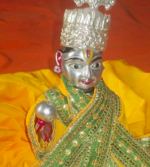






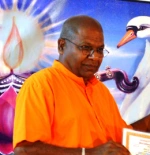

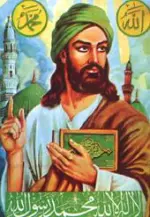
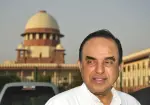
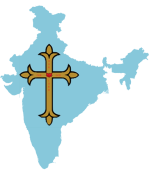



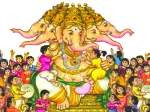



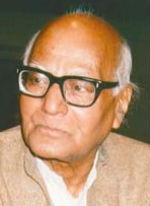

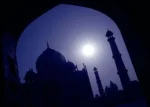




[…] Buddha was every inch a Hindu: A reply to those who think Gautama rejected Hinduism – Koenraad… (bharatabharati.wordpress.com) […]
LikeLike
[…] Buddha was every inch a Hindu: A reply to those who think Gautama rejected Hinduism – Koenraad… (bharatabharati.wordpress.com) […]
LikeLike
The clarification about the role of the Rishis as a special category is appropriate. The entire comment has been useful.
LikeLike
This refers to Dr. Elst’s comments on vanapastha and sannyasa ashramas above.
The difference between the vanaprasthi and the sannyasi is that the former still has family relationships—and recognises patriarchal linage and caste identity—while the latter, having performed the sraddha rites for himself, his father and his grandfather, no longer has family connections, family linage or caste identity, and belongs to society at large. The exception is the sannyasi’s mother, who is always recognised and held in esteem by the sannyasi because of her life-giving qualities, and because she does not represent patriarchal linage or caste identity. A mother by herself is always a universal entity.
[An aside: The Kanchi Mahaswami who was regarded as very traditional in his views and practice, was not allowed to see his mother as he would be required to prostrate to her. As he was the Shankaracharya and identified by many as an incarnation of Devi, it would not have been appropriate for him to bow to his mother in public.]
The sannyasi belongs to the Gods—this is indicated in the sannyasi’s gotra which is used to identify him in ritual circumstances—and when a sannyasi dies the rituals are done with reference to the Gods and Rishis rather than for the human family ancestral line. In the event a sannyasi wishes to re-enter society, he must be adopted by a new family—not his original family—and is ritually reborn into the new family.
Because of the stranglehold the Indian Hindu family has on its members, which can easily hold back an spiritual aspirant, sannyasa became the preferred ashrama—refuge—for the spiritual aspirant, freeing him from all family obligations. But interestingly in practice, a number of saints and jnanis also have taken formal sannyasa after their enlightenment in order to fulfil their felt obligations to Dharma—i.e. recognizing that Hindu society and religion gave them the context, support and initial guidance for their spiritual quest—though sannyasa was not necessary or even helpful to them spiritually.
So the distinction between vanaprasthi and sannyasi is social—not spiritual as no special social position is required for spiritual practice or attainment.
The Vedic Rishis are not usually thought of as sannyasis. Rather they are Rishis, a special category with a title—Rishi—recognising their supreme attainment and their position as Vedic authors and spiritual guides for the whole of society. Very few sannyasis have ever been recognised as Rishis.
Having said that, the Rishis along with the Gods, are included in the sannyasi’s parampara and their names are recited on special occasions. This reinforces the sannyasi’s relationship to the Gods and Rishis rather than to family or human society.
The sannyasi renounces the three worlds Bhur, Bhurva and Svar, which are the worlds a human reincarnates in repeatedly until free of desire and attachments. The next four worlds above, Mahar, Jana, Tapa and Satya, can be evolved through without the necessity of a human birth and are therefore not renounced. So the object of sannyasa is to stop reincarnation as a human being in the worlds (lokas) of Bhur (this world), Bhurva (the world between), and Svar (heaven).
It is a different matter that the sannyas institution is degraded today and sannyasa is not the advised ashrama or lifestyle for the spiritual seeker anymore, as society no longer recognises the sannyasi—except as a beggar—and does not give the necessary life-sustaining support.
LikeLike
Grateful for this elucidation.
LikeLike